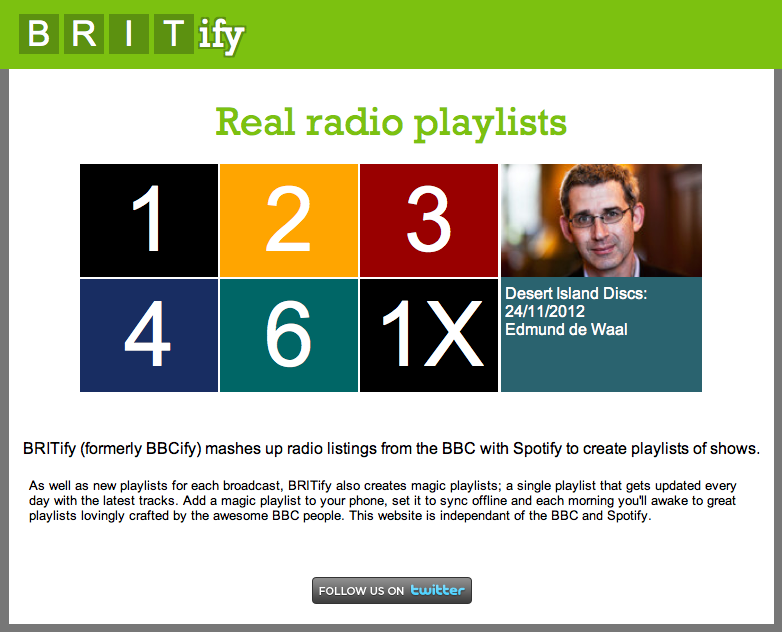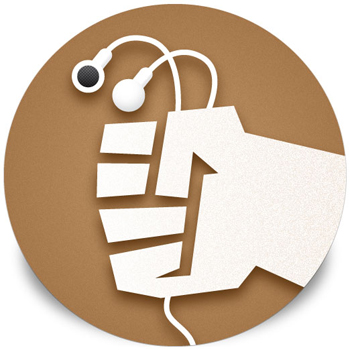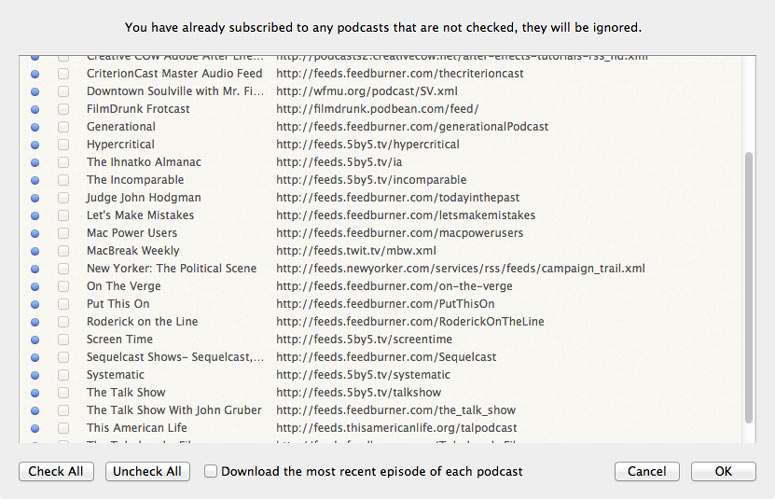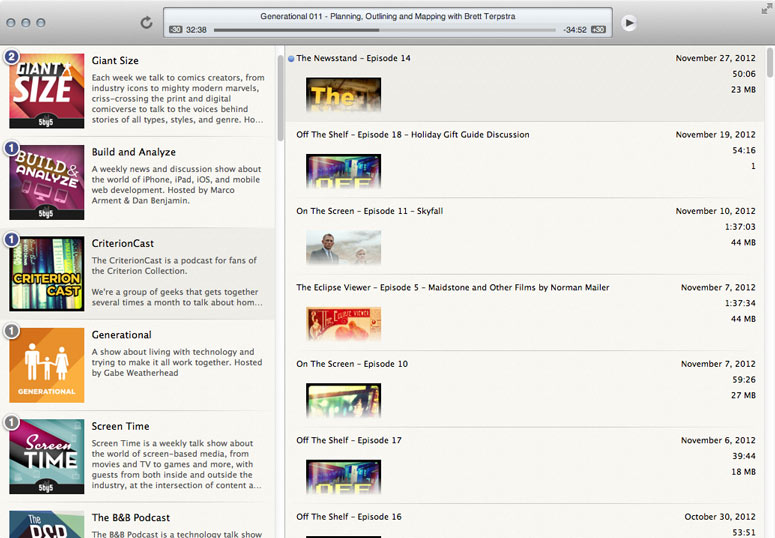Apple Mail to Day One Service

Mail to Day One
For months I have been using Brett Terpstra’s Slogger to fill up Day One with my collected tweets, blog posts, listening preferences and the like. It wasn’t until last week, though, traveling back to Philadelphia for Thanksgiving, that I started writing entries into the Mac and iOS journaling app. I’m really enjoying dumping my thoughts, my worries, my dreams into Day One. I honestly have no idea whether I’ll want to look back on any of the stuff I siphon into it, but for now I’m happy it’s there.
I’ve been poking around the web the past few days to figure out how to get emails into Day One. It sounds like an odd request (why not just search for emails as needed?), but I’d like to explain why I set out to make this happen.
A Personal Use
My great aunt isn’t doing too well. She’s been in the hospital these past few weeks recovering from complications after surgery. I visited her in the hospital when I was home and we had a great conversation. She’s tough, but in the days since we spoke she took a bit of a turn.
The whole ordeal gives me pause. It makes me think of the conversations she and I haven’t had over the years, the ones I had planned to have “later.” I also think of the many conversations we’ve had that I plumb forgot. And so I’ve been making an effort to recount my time with her in Day One, to at least keep track of how this experience has been for me and my family.
My cousins (my aunt’s daughters) and my mother have been texting and emailing updates as things progress. I’ve gotten enough of these emails now to recognize that there is some lasting value to them. They are little notes along this path; little reminders of what’s going on in my world right now. Those are the kinds of signifiers I’d like culled and collected into Day One.
More Generally, Correspondence
On rare occasions I’ll go looking through old emails for fun, to see what I was thinking way back when or check out who was saying what to me. Since email is ever-searchable, I generally just let it all pile up, ready for retrieval if ever I need a specific message.
I’d like to collect some of my more interesting correspondence. Good news, bad news, intriguing arguments…a lot of this sort of thing still happens in email for me. I can think of more than a few instances of emails from the past decade that I’ve wanted to retrieve, only to find that they’re lost for good.
So I’ll start clipping emails to Day One. Not all of them, of course. Just the ones that seem impactful to me.
How It Works
This service triggers an AppleScript that creates a new Day One entry with the contents of the currently selected email in Apple Mail. The entry’s date will match email’s date stamp and the entry text will look like this:
## Email Message from {Sender}
[View Original Message](message://path-to-email)
**Subject:** {Subject}
**From:** {Sender} ({sender's email address})
**Date:** {the date}
---
{Email content}
Once the script does its magic you’ll get a Growl notification (if you have it installed) letting you know entry has been created. Day One doesn’t need to be open for this to work, nor will it launch or activate.
Important: The AppleScript requires the Day One Command Line Interface. It’s a very simple installation; go get it.
If you would like to just try the raw AppleScript and trigger it from elsewhere, you can view and download it here.
Installation
- Make sure you have the Day One Command Line Interface installed.1
- Download Apple Mail to Day One.zip and unzip it.
- Move
Apple Mail to Day One.workflowto~/Library/Services/. - Configure a Keyboard Shortcut in System Preferences > Keyboard > Keyboard Shortcuts > Services. I recommend ^⌥⌘D, only because that’s what I’m using.
Notes
- This service doesn’t actually receive any input before running the AppleScript, however it is restricted to only work in Apple Mail. As such your keyboard shortcut won’t be global; it will only clip the message if Mail is active.
- No formatting from the body of your message will be retained, so no links or quote levels. I’d like to change this in the future but the only way to get it working through AppleScript seems to be parsing the raw source message, which is a real pain.2
- I made this for clipping received messages. Running it on a sent message will work, but it will look like it’s “from” you (which it is).
- Attachments don’t carry over into Day One, but the CLI does make it pretty simple to pass an image to Day One. Maybe in the future I’ll make a different service to get attached pics into Day One.
Big Thanks
This script is a modified version of one by Justin Lancy (aka Veritrope). His original could take mail messages and export them into text documents. His code was damn clean; I barely changed anything but the output.
The structure of the mail message link is based on this 2007 AppleScript by John Gruber. Still works.
Initially I tried to get this working with Brett Terpstra’s Clip To Day One System Service. Once I started working with the Day One CLI, I realized I didn’t need to mangle Brett’s ruby script. (The holdup was getting the Day One entry’s creation date to match the email’s received date.) I’d be remiss if I didn’t mention it.
Tip Me If You Can
If you’d like to throw a little something my way I’d be very appreciative. I maintain the candler blog and these other little projects in my spare time. If you’re able and want to get me a coffee, a beer or dinner, this is the easiest way to do it. I thank you in advance.
BRITify Gets a Redesign ⇒
BRITify, a service that makes Spotify playlists out of BBC radio track lists, got a slick design update today. Here’s what it looks like now:

BRITify Redesign
My favorite lists are on BBC 6, specifically the Radcliffe and Maconie show.
For the most part I listen to my own iTunes collection or Pandora, and Rdio and I have an on-again-off-again relationship. BRITify is basically the only thing that keeps me coming back to Spotify. I really wish these guys would cull the same data and make Rdio playlists.
PodGrasp: The Best Mac Podcatcher (At Least For Now...)

PodGrasp Logo
I have a confession to make: I haven’t been listening to that many podcasts lately.
Back when I lived in New York City and rode the subway every day, I piled through them. Leo Laporte’s TWiT shows were my gateway drug, and eventually I subscribed to most of the shows on Dan Benjamin’s 5by5 network.
And that’s just the start. Networks like Earworlf, Maximum Fun, Nerdist, 70 Decibels, Mule Radio Syndicate and (of course) Hyperbolic prove we’re in a golden age of the form. Hell, I even bought fancier headphones1 just to block out the city’s bustle and listen more closely to the analysis, rants, jokes and squabbles of my fellow geeks.
When I moved to Austin, though, I bought a car, and it (naturally) became my primary conveyance. Keeping up with podcasts has proven a bit tougher with my shorter commute,2 and getting them to play through my car stereo is in itself an ordeal I’ll have to explain in another post.
I got tired of never finding the time to listen to podcasts anymore, so I set out to fix that. Since I spend the majority of my time at a Mac, I fired up the Mac App Store to see what was cooking in the desktop podcast player department. I found a dearth of options, but PodGrasp caught my eye. It’s an excellent start, but before I get into it I feel I must dispel the notion that OS X actually ships with a podcast player.
iTunes is the Problem, Not the Solution
The iPod’s ascent has been, without question, the biggest contributing factor to the popularity of Web broadcasting.3 So it has always been something of a wonder that iTunes, the application at the center of this aural revolution, is essentially the worst application for managing podcasts.
For one, iTunes is bloated. After Photoshop and Aperture it’s one of those apps I have to sit and wait and wait and wait just to launch. Once it’s open though, things just get worse. Shows are organized in the most convoluted manner possible, by default alphabetically and then by episode date.
Hardly any information that has become de rigueur for podcasts in 2012 (extensive show notes) is displayed in iTunes, and to get to any of it is extremely tedious. Episodes don’t have to be downloaded to be played, but they do have to be downloaded to sync the playhead to your iOS device, and even then you have to do a full sync to get that info to transfer.
Sure, sure, iTunes 11 might (might!) come out this week and date my little whine here. But I’ll bet podcast management will still be a chore, which is why I put my money where my complaint-hole is and plunked down 99¢ for PodGrasp.
Buggy and Brave
According to PodGrasp’s release notes the app debuted on October 31st, making it not even a month old. There is a second update pending review in the app store already, bringing more fixes. This app is clearly in its infancy and has a long way to go, but it’s a very impressive start so far. Better yet it actually does what it says on the tin: it organizes and plays podcasts.
The first thing I did was import an OPML file that I exported from Instacast on my iPhone. When you do the same thing in iTunes it simply prompts you to make sure you want to import all of your podcasts; PodGrasp is much smarter.

PodGrasp Import
Before importing the app displays a list of all of the podcasts and URLs listed, offering you the option to deselect a few if you don’t want to import them. You are also asked whether or not you would like to download the most recent episode of each show. Even better, once you start the import it shows you whether or not a feed was successfully subscribed to so you can amend any bad URLs. Very nice touches.
Once subscribed, the app has two panels. The left panel shows your podcasts with nice big artwork and the right panel shows the episodes for the selected show. If no episodes are downloaded your shows are sorted alphabetically, but once you start downloading episodes they get sorted in order of newest available for listening. Selecting an episode reveals show notes and the ability to either download or trash an episode.

Playback is where PodGrasp is currently lacking. There is no way to pause the current podcast unless you switch to the app. Even then the only way to pause it from the keyboard is with the space bar, and that’s buggy right now as well. If you navigate to a different podcast from the one you are listening to and hit the space bar to pause the current track the app will crash, for example.

PodGrasp Toolbar
While the actual podcast management portion of the app looks great, the playback controls at the top of the window leave a lot to be desired. The play button is awkwardly placed to the right of the playback pane, the playhead is too small to grasp and 30 second forward and backward buttons are barely noticeable. On top of that, the whole upper tenth of the window reminds me of some very old designs, almost like “Classic” mode OS 9 apps. And the icon has to go. It reminds me too much of Howard Stern’s logo which I don’t particularly care for to begin with.
All of that said though, PodGrasp is currently the best option available on the Mac App Store for desktop podcast management. It will only get better and it truly is an incredible start, especially considering there is almost no competition for this right now. Go get it4 so Gary Hughes, PodGrasp’s developer, can make it even better. His FAQ says an iPhone app is planned as well, so it’s not like he’s gonna take your Washingtons and run.
A Race to Spring
This morning Federico Viticci tweeted a link to information about Instacast 3, a brand new version of my iOS podcatcher of choice coming soon. Vemedio’s forthcoming app will be universal and use its own syncing service instead of iCloud. Here’s the bit that got my attention though:
In Instacast 3 we made a lot of internal changes to the very foundation of the app that will allow us to make a Mac version that will be totally compatible with Instacast 3. This is planned for spring next year. Stay tuned.
Gary Hughes, then, has until the spring to polish up PodGrasp before he has a big player competing in this space. Game on.
-
I sport Etymotics with the biggest foam buds they make. The new model is the Etymotic hf3 Headset (affiliate link). Pricy, yes, but I was spending more replacing crappier sets every few months before I got these years ago. ↩︎
-
I know, woe is me. ↩︎
-
They don’t call it a Podcast for nothing. ↩︎
-
Affiliate link. Buy it and I’ll get a few pennies. Thanks so much. ↩︎
Screenplays and the iPad mini ⇒
John August answers the weeks old question:
Is the iPad mini better for screenplays than the full-size iPad? Maybe. It’s smaller and lighter, and much more comfortable to hold for long periods of time. If I were buying something primarily as a screenplay reading device, I’d get the mini.
So there you go, script readers.
Systematic #20: David Wain on Forgetting Everything ⇒
Fountain. Wain. Terpstra. Just listen.
Blogroll (and Blog) as Relic
I was honored to make the cut on Gabe Weatherhead’s first attempt1 at a blogroll, the once ubiquitous list of recommended sites in a blog’s sidebar, over at Macdrifter. As he put it, the links in a blogroll are a clear “endorsement” of a site. Numbers don’t lie: Gabe’s endorsement is a pretty nice one.2
But there’s one point in his post that sparked a great conversation between myself and the girlfriend:
The days of the blogroll are gone. The web is too big now. I could easily link a hundred sites that are similar to mine.
I agree with Gabe’s take on this, but the girlfriend got a bit worked up over his eulogizing. Her exact words were: “Plenty of sites I read have blogrolls. Maybe they’re just gone in your oddly specific tech/meta/blogging about blogging world.”3
She makes a fair point. The sites I read, and there are a lot, have long since nixed the blogroll, but a great many out there haven’t.
I believe that the blogroll’s demise is imminent and absolute; new Web writers have no need or want for it. The sites that she reads that still have and maintain one, I’m convinced, do so because, as first generation bloggers, it’s in their site’s DNA.
I see the blogroll to blogging what the typewriter is to writing; a relic, yes, but one that still works with varying mileage. I’m reminded of what Cormac McCarthy said when he replaced his Olivetti in 2009:
“I have typed on this typewriter every book I have written including three not published. Including all drafts and correspondence I would put this at about five million words over a period of 50 years.”
It worked for him, very well indeed. Will new writers, then, use a typewriter? Precious few, and they will likely start on a computer or tablet or phone. But those who do I’m sure will have their reasons and their output will speak for itself.
The question of the blogroll’s relevance boils down to where “blogging” is going. I maintained a blogroll for many years of my online writing, but doing so became tedious. Sites disappear, relationships dissolve, readers’ expectations shift, etc. Ultimately I had to sit myself down and ask why I had started the blogroll in the first place. The answer: because Wordpress told me to. It was all part of the package. It’s what blogging was, and honestly the first time I installed Wordpress I didn’t know what the hell to do with it. So sure. This blogroll thing? Let me flesh it out.
As blogging declines, though, writing is more interesting than ever. Whoever cracks the nut of finding a place on the Web for writers who just want their words out there will find themselves at the center of an online revolution. The audience is simply massive.
Writers of all walks need a place to stick their words. The question is where are they sticking them now? In Facebook posts and notes, tweets, emails and texts. They stuff words by the thousand into files on their computer, in shared Google documents, in blog comments and elsewhere. We write so much we don’t even know that what we write is worthwhile.
That’s why I think blogging, as a concept, is withering, and with it go the traditional elements that make a blog a blog. Personally, I think new writers will join services that deconstruct what a blog is, like Medium. Creating your identity around your blog is a thing of the past. In the Facebook age, our identity is already defined; we just need a place to share our longer thoughts.
The girlfriend is right that our little tech nook of the Web is unique, and that there’s a whole world of writing out there that I am often blind to. However, as long as I’ve been reading content online, technology sites have been ahead of the publishing curve, not behind it. I think they are once again.
Dan Sturm's Fountain for Sublime Text Mod ⇒
I feel like a bit of dope for not happening upon Dan Sturm’s excellent customizations to Fountain for Sublime Text sooner. It took Brett Terpstra linking it for me to find it.
Dan made a really slick looking theme for the Fountain package and explains in simple terms how to go about customizing the .sublime-settings file. But my favorite bit is this one:
Personally, I don’t want to feel like I’m writing a screenplay. Writing a screenplay is hard and stressful. Conversely, writing words into a text editor is something I can do all day long. Maybe some day I won’t be so particular or need to psych myself out in order to write, but for now, this feels right to me and I’m sticking with it.
Awesome. That’s the point.
Fountain for Sublime Text Updated With New Themes, Package Control and More
Back in September I cooked up a little package bringing Fountain syntax highlighting and other goodies to Sublime Text 2. Over the last few weeks I’ve polished it up a bit and last night it was added to Package Control, so you can install it right from within Sublime Text. For a full overview, check out the project on Github.
I’ll share a bit about what’s new, but first, go get it:
Installation
- Install Package Control.
- Select
Package Control: Install Packagefrom the Command Palette (⇧⌘P). - Select Fountain.
- Write the next Full Metal Jacket.
What’s New
Package Control
A big thanks to Isaac Arias for filing a pull request to get this working. Not only does being in the Package Control repo make it easier than ever to install Fountain for Sublime Text, but I like to think it adds a token of legitimacy to the whole endeavor. Fountain is indexed now, folks, like being added to the phone book!
Themes
The Fountain syntax grammar is still heavily customized, which means that themes need to be customized as well. This may not always be true, but it’s the case at present. The new default theme is called Fountain Byworded Light based on Philip Belsky’s excellent theme of the same name. Here’s what it looks like in all its Fountain glory:

Fountain Byworded Light
I tried to keep all the elements colorized but subtly. Notes and Boneyards ought to jump out at you. This is the new base theme, so if you want to make any of your own you should work from this one as the old Classic theme (still included) doesn’t have all of the grammar definitions included. One addition I hope you like is “punctuation” highlighting, so the asterisks and octothorpes used as part of the syntax should fade away a bit.
There’s also a Fountain Byworded Dark and a Fountain Tomorrow Night, based on Chris Kempson’s theme family.
Keyboard Shortcuts
Straight up ganked the methods for this from Brett Terpstra’s awesome MarkdownEditing package. Thanks, Brett.
*,**,(and[- Wrap selected text with asterisks (single for italics, double for bold) parentheses or brackets as needed.- ^⌘n (control + command + n) - Note: If triggered with nothing selected will start a new Fountain formatted note (
[[This is a note.]]). If triggered on selected text it will wrap it with double brakcets as a Fountain note. - ^/ (control + /) - Boneyard: If triggered with nothing selected will start a new Fountain Boneyard section (
/*This is the boneyard*/). If triggered on selected text it will wrap it in Boneyard formatting.
An Ongoing Project
There are still a boatload of improvements I’d like to make to this little package. Mostly, though, I’d like to make writing screenplays easier. Eventually I’d like to make some screencasts showing you some of the power tools hidden within Sublime Text and how screenwriters can use them. Completions, for example, can make writing dialogue-heavy scenes incredibly simple.
On top of that, this code needs cleaning up, a project for another time. Luckily, you’re welcome to take a peek at the Github repo and make any changes you please. If you have feature requests or ideas or questions, please share them here in the comments or contact me directly. I tinker with this stuff more than I actually write movies (could you tell?) so the best thing you can do is stress test it and tell me how it holds up.
Tip Me If You Can
If you’d like to throw a little something my way I’d be very appreciative. I maintain the candler blog and these other little projects in my spare time. If you’re able and want to get me a coffee, a beer or dinner, this is the easiest way to do it.1 I thank you in advance.
-
Unless you’re visiting Austin. In that case I accept the real thing. ↩︎
Dave Winer Quit Netflix ⇒
Dave Winer, upon turning off his Netflix account:
I think Netflix missed the boat, bigtime. They could have been the place on the net to learn about and watch and share movie experiences. I think they could have started a match.com type service. […] They were gathering all this information about people’s movie preferences. But they were reluctant to build systems around it. And reluctant to open it up to app developers. I think we all missed out on something, because movies at least to some of us are such an important form of personal expression.
I quit cable, so I still lean heavily on Netflix. After I moved to Austin I cut my disc plan, though, because I can drive to (at least) two great video stores when I need a movie.
But I get Dave’s point. Most of the time the girlfriend and I either gravitate between a few TV series on the service1 or waste time flipping through the available list of streamers until we give up and do something else.
As my pal Aaron Hillis told me, compared to a video store, “Netflix offers a sterile, impersonal and flat-out incomplete experience.” And that’s not just because it’s digital.
In related news, I picked up a nice haul of Blu-rays on Black Friday, a few of which are currently streaming on Netflix and other services. But, you know, I still like my discs.
-
Right now Star Trek: The Next Generation and Cheers. ↩︎
New York Film Academy [Sponsor]
My thanks once again to the New York Film Academy for sponsoring the candler blog this past week.
Has cinematographic technology made the art easier or harder in recent years?
The relative challenge of cinematography is of course dependent on the demands of the filmmaker, the producer, the director, funding sources and the cinematographer. Also, the nature of the film, whether shot in studio or on location, or involving green-screen computer-generated graphics, present their own unique challenges. Which helps illustrate the real question: Is the cinematographer trained to work in a broad variety of situations, able to adapt to the needs of any particular production?
The New York Film Academy offers a one-year Conservatory degree as well as a two-year Master of Fine Arts degree for the individual who is a serious school of cinematography student. The program combines classroom study, self-directed projects, production workshops and collaborations involving NYFA students from other disciplines (producers and actors among them). The first challenge, therefore, for the cinematographer is perhaps the most difficult challenge of all: working with other people who are just as important as the quality of the photography.